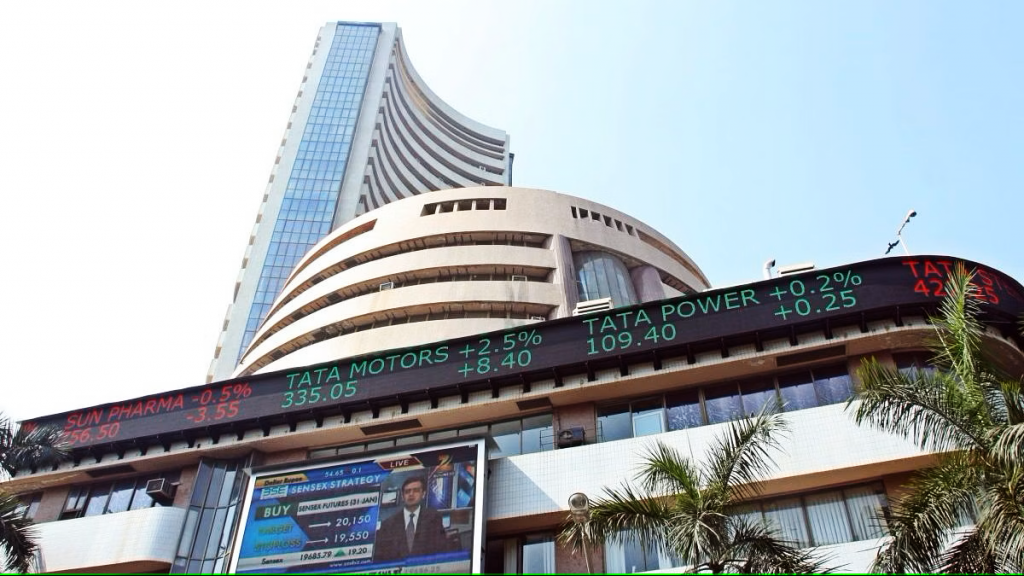In the vast landscape of India’s financial markets, the Bombay Stock Exchange (BSE) stands as a symbol of historical significance and economic dynamism. Established in 1875, the BSE holds the distinction of being India’s first listed exchange, marking the inception of organized trading in the country. Over the years, it has played a pivotal role in shaping India’s financial ecosystem.
The BSE’s tryst with innovation continued as it introduced the Sensex in 1986. The term “Sensex” is an amalgamation of “Stock Exchange” and “Sensitivity Index,” reflecting its core purpose. Initially, it was computed using a ‘market capitalization-weighted’ methodology, and its journey began with a base year of 1978-79, with a base value of 100. This pioneering step laid the foundation for a benchmark that would come to represent the pulse of India’s stock market.

Diversity and Recognition: A True Reflection of India’s Economy
One of the most striking features of the Sensex is its diverse composition. Comprising 30 of the top scrips from a wide range of sectors, including Finance, Health Care, IT, and Automobile, the Sensex presents an accurate mirror to the vast expanse of India’s economic landscape. It is not limited to representing a single industry but encompasses the breadth of the entire Indian economy. The Sensex’s significance extends beyond India’s borders. It is traded on international platforms like EUREX, offering global investors access to India’s vibrant stock market. Additionally, it finds its place on the trading boards of leading BRICS nations, further cementing its status as a prominent index on the world stage.
Listings and Capitalization: A Glimpse into Market Dynamics
As of today, the BSE boasts a listing of nearly 6,000 companies. This rich tapestry of listings contributes to the market capitalization of the Sensex, which currently stands at a staggering ₹301.7 lakh crore (equivalent to approximately US$3.8 trillion). The market capitalization method, at its core, provides a glimpse into the proportion of shares issued by these listed companies that are readily available for trading in the market. This metric, in many ways, reflects the vibrancy and depth of India’s financial markets.
Cracking the Code: How Sensex Is Calculated
The calculation of the Sensex is not a mere arithmetic process but a sophisticated endeavour. To determine this benchmark index, multiple steps are involved. First, we calculate the market capitalization of each company within the Sensex. This is achieved by multiplying the company’s outstanding shares by its market price. The resulting figures are then employed to determine the free-float market capitalization. The free-float factor, representing the percentage of shares available for public trading, plays a pivotal role in this stage.
In the final step, the free-float market capitalization is divided by the index divisor of 100. This mathematical operation yields the Sensex value, which encapsulates the ever-changing dynamics of India’s stock market.

Understanding the Historical Significance of BSE and Sensex
To truly comprehend the significance of the BSE and the Sensex, it’s essential to dive into the historical context in which they emerged. The BSE, founded in 1875, was a pioneering institution in India. It became the first listed stock exchange in the country, setting the stage for the formalization of stock trading. The establishment of the BSE marked a major step forward in the Indian financial landscape, providing a platform for organized trading and investment.
The journey of the BSE took a remarkable turn in 1986 with the launch of the Sensex. The term “Sensex” itself is a fusion of “Stock Exchange” and “Sensitivity Index.” It was a groundbreaking introduction, and its calculation methodology set the tone for creating a robust benchmark for the Indian stock market. The base year chosen for Sensex was 1978-79, with an initial base value of 100. It was a modest starting point for what would later become a dynamic indicator of India’s economic health.
Diverse and Reflective: The Composition of the Sensex
One of the distinguishing features of the Sensex is its diverse composition. The index is a collection of 30 top scrips from various sectors, including Finance, Health Care, IT, and Automobile. This diversified selection is pivotal, as it ensures that the Sensex accurately reflects the broader Indian economy. Unlike some other indices that may be dominated by specific industries, the Sensex mirrors the entirety of India’s financial landscape.
This diversity extends beyond the sectors included in the Sensex. The index is designed to encompass a range of companies with different market capitalizations. This characteristic allows it to be a representative benchmark for the entire stock market.
Internationally, the Sensex has gained recognition and influence. It is not limited to the boundaries of India; instead, it is traded on global platforms such as EUREX. Moreover, it has found its place on the trading boards of leading exchanges in BRICS nations. This international presence speaks volumes about the significance of the Sensex in the global financial ecosystem.
Performance and Sectoral Comparison: Gauging the Sensex
Evaluating the performance of the Sensex is a critical aspect of understanding its significance in the financial landscape. This benchmark index, comprising 30 diverse companies, offers a snapshot of India’s stock market health. Over the years, the Sensex has been an indicator of the country’s economic dynamics, and its performance is closely monitored by investors, analysts, and policymakers.
The performance of the Sensex reflects the collective performance of its constituent companies. When most of these companies perform well, the Sensex tends to rise, and when they face challenges, it may experience a decline. This makes the Sensex a valuable tool for assessing the health of India’s stock market.
One key metric for assessing the Sensex’s performance is the annual returns it delivers to investors. Historically, the Sensex has provided competitive returns, often outperforming other asset classes like fixed deposits and gold. However, it’s important to note that stock market investments inherently come with higher volatility and risk. Investors need to carefully consider their risk tolerance and investment horizon.
Comparing the performance of the Sensex to other sectors is a common practice. It provides insights into whether investing in stocks, as represented by the Sensex, has been more rewarding compared to other investment avenues. Historically, the Sensex has displayed the potential for significant wealth creation over the long term. Nevertheless, like all investments, it also experiences periodic downturns.
In addition to performance, market capitalization and sectoral diversity are key factors. Understanding market capitalization provides insights into the size and scale of the Indian stock market, as we discussed earlier. On the other hand, the sectoral diversity of the Sensex is another crucial aspect to consider. The index includes companies from various industries, such as Finance, Health Care, IT, and Automobile. This diversity allows investors to gain exposure to different sectors of the economy, thus reducing concentration risk. Diversification is a fundamental strategy to manage risk and optimize returns.
While investing in the Sensex can be a rewarding long-term strategy, it’s essential to keep in mind that stock market investments are subject to market fluctuations and risks. Diversifying your portfolio with a mix of assets, including fixed income and alternative investments, can help mitigate risks and optimize returns. Additionally, consulting a financial advisor or conducting thorough research is advisable before making investment decisions.
In summary, the Sensex plays a pivotal role in India’s financial landscape. It encapsulates the performance of top companies across various sectors, providing a reliable barometer for the stock market’s health. Assessing its performance in comparison to other asset classes and understanding market capitalization and sectoral diversity are essential steps for investors looking to harness the opportunities presented by this iconic benchmark index. As with any investment, it’s crucial to be mindful of risks, maintain a long-term perspective, and consider diversification to optimize returns and manage volatility.
